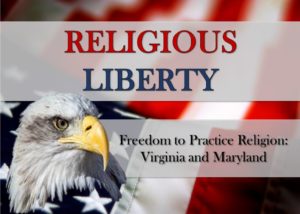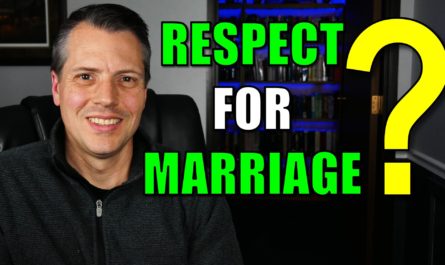 Many folks today claim that our founders desired that all religion should be banished from the public square. This, however, would come as quite a surprise to the founders themselves, as the story of Virginia’s road to freedom demonstrates.
Many folks today claim that our founders desired that all religion should be banished from the public square. This, however, would come as quite a surprise to the founders themselves, as the story of Virginia’s road to freedom demonstrates.
In 1776, when the Virginia state convention met to consider endorsing the Declaration of Independence, it comprised its own version: the Virginia Declaration of Rights. Although Virginians were still required to pay taxes in support of the Church of England, the established church of the state, this declaration stated that
Religion, or the duty which we owe to our Creator, and the manner of discharging it, can be directed only by reason and conviction, not by force or violence; and therefore all men are equally entitled to the free exercise of religion, according to the dictates of conscience; and that it is the mutual duty of all to practice Christian forbearance, love, and charity toward each other.
This official document, of course, protected the free exercise of religion. However, it went further, recognizing that men not only should be free to practice their religion, but they have a “mutual duty” to the Creator to practice the Christian virtues. Even the most simple-minded among us can see that the ideas propagated in the Virginia Declaration of Rights bear little resemblance the eradication of religion that many propose today.
After the state of Virginia declared its freedom by endorsing the Declaration of Independence, discussion ensued about whether the state should continue establishment of any particular brand of religion. Thomas Jefferson described his thoughts on the subject in his Notes on the State of Virginia, in which he lamented about the current laws that allowed the government to punish for rejection of certain religious beliefs. He believed that the rights of conscience could never be submitted to man, as man answers only to God for them.
In 1777, Jefferson drafted the Bill for Establishing Religious Freedom, which would later become known by two names: the Act for Establishing Religious Freedom or the Virginia Statute for Establishing Religious Freedom. He introduced it to the General Assembly in 1779, but it was tabled until 1786 when it passed after James Madison re-introduced it.
During the years between Jefferson’s initial drafting of this bill and its passage, the discussion concerning religious establishment continued. In 1784, Patrick Henry (of “Give me liberty or give me death” fame) introduced to the General Assembly of Virginia a controversial bill. Known as A Bill Establishing a Provision for Teachers of the Christian Religion, it imposed a tax providing for the funding of churches. Under this law, the taxpayer would be allowed to choose the destination of the funds as long as the recipient fit within the realm of Christianity. Although the state constitution, adopted in 1776, allowed a bill of this nature, James Madison disapproved. In response, he composed his famed Memorial and Remonstrance to combat Patrick Henry’s proposed bill. He rhetorically inquired, “Who does not see that the same authority which can establish Christianity, in exclusion of all other religions, may establish with the same ease any particular sect of Christians, in exclusion of all other sects?” Madison desired not to eliminate Christianity, but to prohibit government from officially requiring citizens to support a specific brand of religion.
Madison’s efforts in opposition to Patrick Henry’s bill swayed public opinion concerning the connection between government and religion, and Thomas Jefferson’s Act for Establishing Religious Freedom finally passed the General Assembly in 1786. So important was this statute that its text included a stated desire to make it irrevocable; however, because that was an impossibility, it clearly specified that religious liberty as proposed by the act was a “natural right” of citizens, and to repeal the act or narrow its scope would infringe upon this natural right.
So, what was in this act? What exactly did Thomas Jefferson think about the “separation of church and state,” an overused statement attributed to him? Obviously, he understood it much differently that many do today. The Act for Establishing Religious Freedom was not intended to remove religion from the public sector or even from government itself, but to prohibit the government from forcing adherence to a certain religion. This is evident from the text of the bill:
Be it enacted by General Assembly that no man shall be compelled to frequent or support any religious worship, place, or ministry whatsoever, nor shall be enforced, restrained, molested, or burthened in his body or goods, nor shall otherwise suffer on account of his religious opinions or belief, but that all men shall be free to profess, and by argument to maintain, their opinions in matters of religion, and that the same shall in no wise diminish, enlarge or affect their civil capacities.
This act declared that the government could no longer require attendance at or payment to any religious organization. In other words, no more paying taxes to support the Church of England (or any other church). Additionally, every man would enjoy the freedom to proclaim his religious beliefs with no adverse effect on his ability to serve in government in any way.
The importance of this bill is reflected in that it became part of Virginia’s constitution in 1830, and remains there to this day. Some of the wording is almost verbatim, even down to the carryover of the Jeffersonian word burthen instead of the more modern burden.
Virginia was not the only colony to struggle with the true definition of religious liberty. Its neighbor to the north, Maryland, also ventured into the fray. As a result of some skirmishes between Catholics and Protestants, the Act of Toleration in 1649 was passed. This act provided for freedom of religion, but only for those “professing to believe in Jesus Christ.” For those who spoke derogatorily of the Trinity, however, there would be no freedom. They would receive the death penalty.
Once again, the history of America reveals that our founders were interested in freedom of religion rather than freedom from religion. They had little interest in purging religion from everyday life or government itself; what they desired was for every man to have the freedom to practice religion in his own way. Generally, it was expected that the personally chosen religion should fit within the confines of Christianity.
Previous article: Religion and Morality: Politics According to George Washington
Next article: An Official Recognition of God: The Declaration of Independence
See the other articles about religious liberty



